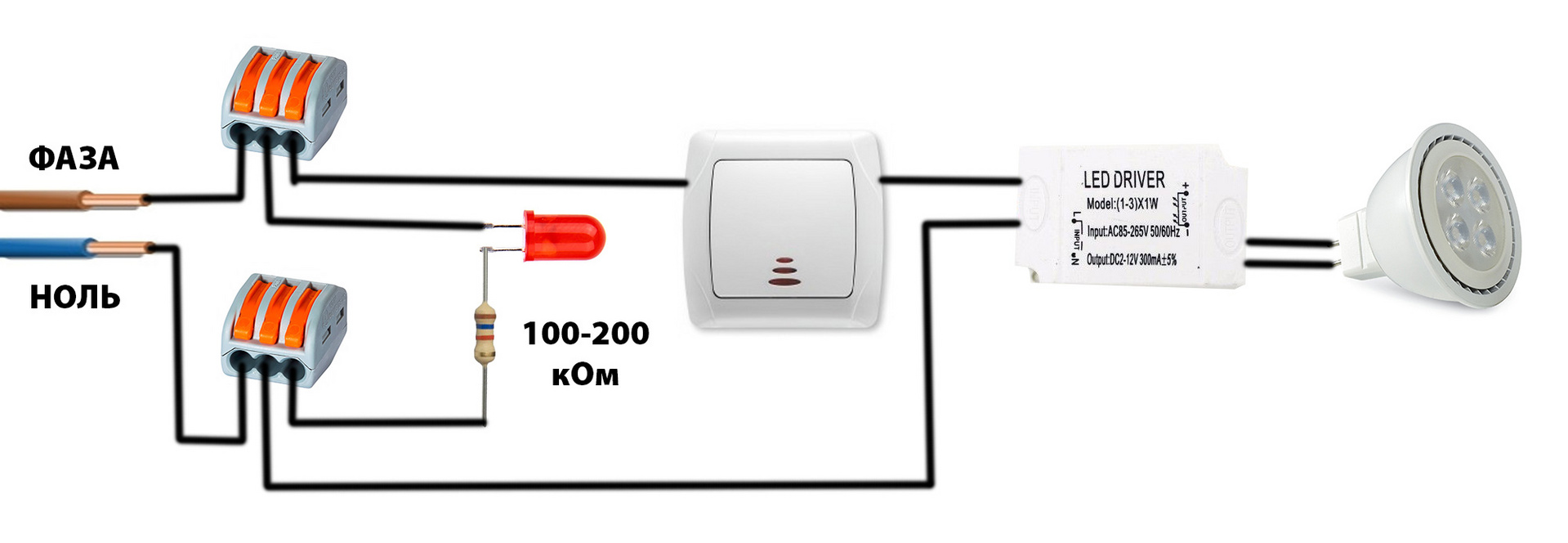Answer the question
In order to leave comments, you need to log in
Apply phase or zero to the switch?
Starting the phase on the switch, the backlight works and the switch is visible at night, but the lamp driver goes crazy arranges a disco in the dark, starting zero, the backlight of the switch does not work. How to make both the backlights work and the lamps do not glow and do not blink in the dark
Answer the question
In order to leave comments, you need to log in
You bought the worst light bulb ever. The manufacturer there decided to save on the resistor. Throw out such a lamp and do not sting on normal lamps. I have illuminated switches throughout the apartment and there are no problems with flashing lamps. Naturally tear phase.
In fact, all of that text can be ignored. The unequivocal answer to your question is that a phase must always go into the switch. It's like an electrical safety issue.
Perhaps you will be helped by switches that can break two contacts - both phase and zero.
If you have both wires coming into the switch (both phase and zero) and then two wires also go from the switch to the lamp, then the backlight of the switch can be connected in parallel with the lamp. The backlight of the switch will always glow, but the light bulb driver will not go crazy. For example like this:
I am not an electrician, but if the lamps are LED, judging by the driver, then the backlight in the switches is prohibited. But in order to make it work somehow, you need to modify the switches or lamps - add a resistor to eliminate the disco. But this is a crutch, you need to give up such switches. Another option is to bring a separate branch to the backlight, but this is completely nonsense.
1. open the PUE requirements for lighting - 6.1.36. Installation of fuses, automatic and non-automatic single-pole switches in zero working wires in networks with grounded neutral is prohibited.
2. buy lamps that are compatible with illuminated switches (they contain the necessary shunt inside).
3. put, similarly to the circuit indicated above, in parallel with the load (lamp) a shunt resistor of at least 2W, the resistance is sufficient and 50kΩ is quite.
You can also lead 3 wires to the switch (depending on the connection scheme, with or without junction boxes), but only the phase should break the switch (including the pass-through switch, like yours).
This is according to the PUE, and according to "concepts".
According to the PUE, there is an explanation above, I write according to "concepts" as a former electrical engineer.
It is the phase that is torn only so that when the switch is off, there is guaranteed no phase in the cartridge and it is possible to replace a faulty (short-circuited) light bulb without the risk of getting an electric shock, and also to replace the cartridge. Or make repairs with wet hands, standing in a full bath =)
As for the blinking backlight in the switch or the lamp itself, you just need to use others that can work normally with the backlight. Lamptest is in your hands, all the info is there.
Didn't find what you were looking for?
Ask your questionAsk a Question
731 491 924 answers to any question